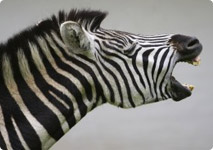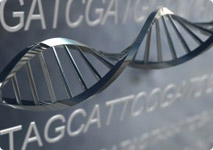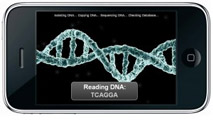 About Us
About Us
PrintHow DNA Barcoding Works and What it Will Do
 Imagine
Imagine
Imagine a world in which you can know the name of any animal, any plant, any fungus, any organism, on the spot, in an instant, anywhere on our planet. Imagine that you had access to the sum of humanity's knowledge about that species - is it harmful, is it part of a healthy ecosystem - or is it endangered and in need of protection? How would this change our lives, our perspectives, and our impact on this planet's biodiversity? What would it be like to live in a bioliterate world?
To date, this world has largely remained within the realm of science fiction, and its users restricted to explorers of new and distant planets. But the rationale for developing such a system includes clear applications here and now. The globalization of trade, increasing impacts of climate change, and calls for biodiversity conservation make rapid species identification a world-wide need.
 The Barcode
The Barcode
As many of us go about our daily lives, we are surrounded by a staggering array of consumer products, all diligently catalogued and labeled with the familiar blackand- white barcode. The Universal Product Code (UPC) system developed by the industrial sector to brand retail items employs 10 options at each of 11 positions to create 100 billion alternates. Although undecipherable and uninformative to the average person, UPC barcodes provide retailers a means of unambiguously identifying a product and connecting it to more meaningful data such as price and availability.
Just like UPC barcodes, the DNA sequences within each species are unique. And like the 11-digit UPC's, short DNA sequences can provide a means of connecting a specimen in-hand to a wealth of information about that species.
 New Technology
New Technology
As the technology to read DNA continues to improve, we move closer to a world in which the identification of species, and access to information on their biology, ecology, and socio-economic significance, can be provided with all the ease of scanning soup cans at the supermarket check-out. DNA barcoding aims to realize that world.
Achieving this goal requires increased involvement of the global community. As of early 2008, more than 100 outstanding researchers from 25 nations have indicated their support for a large-scale project focused on the construction of a comprehensive DNA barcode library for eukaryotic life. The first phase of the International Barcode of Life (iBOL, www.dnabarcoding.org) Project is envisaged as a five-year project, jointly administered by a consortium of funders and research groups, which will lead to the acquisition of DNA barcode records for 5M specimens, representing 500K species.
 Identifications On-Demand
Identifications On-Demand
In addition to building this library, iBOL will develop new analytical technologies and expand existing bioinformatics platforms. Existing technology can perform barcode identifications on a lab bench, but there is strong demand for integration and miniaturization. The iBOL project seeks to stimulate development of a portable device to support on-site analysis quickly and cheaply.
Learn more about different aspects of iBOL and DNA barcoding.
 Background
Background
 What is Barcoding?
What is Barcoding?
 What is iBOL?
What is iBOL?
 How iBOL Works
How iBOL Works
 Partner Nations
Partner Nations
 Campaigns
Campaigns
 Project Governance
Project Governance

